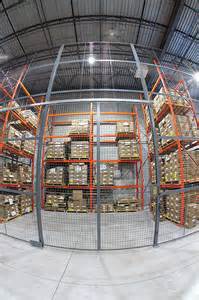
by Fronetics | Jul 10, 2014 | Blog, Marketing, Social Media, Strategy, Supply Chain
Kale is the hippest and trendiest of vegetables.
The dark leafy vegetable has received Bon Appetit’s dish of the year award, it was served at the White House Thanksgiving, and it has received ringing endorsements by celebrities and celebrity chefs. Kale also has its own T-shirt, lawsuit, and day. Did I mention the book? 50 Shades of Kale is an Amazon bestseller.

The appearance of kale on restaurant menus has increased by 400 percent since 2008. A recent Guardian article reported that sales of kale at Marks & Spencer are already up 32 percent on the same period last year and that it expects this rise to continue in the longer term. Similarly, at Waitrose, sales of kale are up 20 percent year on year.
How is it that kale is cool? Much of it has to do with re-branding – communicating a new image for the vegetable and communicating new (and more flavorful) uses.
The supply chain is suffering from an image problem. If we are going to attract new talent we need to make an effort to make the supply chain hip. The supply chain should look to kale for inspiration. If a leafy green vegetable can realize such a rapid ascent to popularity, so too can the supply chain industry.

by Fronetics | May 21, 2014 | Blog, Talent
According to R.J. Bowman, author of The Secret Society of Supply Chain Management, demand for supply chain professionals exceeds supply by a ratio of six to one. Looking forward, it appears that demand for supply chain professionals will only increase. The U.S. Bureau of Labor Statistics estimates that demand for supply chain talent will increase by 26 percent between 2010 and 2020 – a growth rate that is twice as fast as 14 percent of all occupations.
In response to the demand for supply chain professionals, universities have introduced undergraduate majors, M.B.A. concentrations and even entire degree programs dedicated to procurement, inventory management and global supply-chain strategy. The Wall Street Journal has even gone so far as to declare supply chain management the “hot new MBA.”

The University of New Hampshire Peter T. Paul College of Business and Economics is one university which offers MBA courses focused on supply chain management. This semester Fronetics has had the opportunity to work with students in one of the school’s supply chain management courses. Students in the school’s Supply Chain Management MBA course learn how to design, plan, and operate supply chains for competitive advantage; develop an understanding of how the key drivers of supply chain operations can be used to improve performance; and develop knowledge of logistics and supply chain methodologies and the managerial context in which they are used.
Over the next several weeks Fronetics will share topical supply chain management articles written by several of the MBA students. The students are inclusive of full-time graduate students and professionals who attend the MBA program part-time. The articles point to the diversity of this group of students as well as the student’s breadth of knowledge on supply chain issues.
A full list of the students’ articles follows below:

by Fronetics | Apr 8, 2014 | Blog, Content Marketing, Logistics, Marketing, Social Media, Strategy, Supply Chain
Content is king. By creating and distributing valuable and relevant content in a strategic and consistent manner you will be able to create demand for your products and services and will be able to drive profitable customer action. That being said, while content is king, content doesn’t go far (actually it goes nowhere) without distribution. Wise words by BuzzFeed’s Jonathan Perelman: “Content is king, but distribution is queen and she wears the pants.”

For content to be successful for your business you need to do more than create content – you need to distribute content. Moreover, the content needs to be delivered consistently over time, at the right time, and in the right place.
For your company this means taking the time to identify the distribution channels that are the right fit for your company, your content, and your goals. It also means taking the time to learn how to distribute content via these channels effectively.
For example:
- LinkedIn and Twitter are good candidates for letting people know about the white paper your company just released, whereas Pinterest is probably not a good white paper distribution channel.
- Levering your 140 characters for Twitter is key, but taking those same 140 characters to LinkedIn or Facebook will likely result in you falling flat.
- Distributing your content multiple times a day via Twitter is essential given the short lifespan of a Tweet; however, distributing content multiple times a day via email will not be well received.
Content will help you move the needle. Content will drive profitable customer action. However, your content, no matter how valuable it is, will not be seen and therefore will not be effective if you do not have a solid content distribution strategy. If you want results, remember who wears the pants.
This post was first published on DC Velocity.

by Fronetics | Apr 8, 2014 | Blog, Content Marketing, Logistics, Marketing, Social Media, Strategy, Supply Chain
Content is king. By creating and distributing valuable and relevant content in a strategic and consistent manner you will be able to create demand for your products and services and will be able to drive profitable customer action. That being said, while content is king, content doesn’t go far (actually it goes nowhere) without distribution. Wise words by BuzzFeed’s Jonathan Perelman: “Content is king, but distribution is queen and she wears the pants.”

For content to be successful for your business you need to do more than create content – you need to distribute content. Moreover, the content needs to be delivered consistently over time, at the right time, and in the right place.
For your company this means taking the time to identify the distribution channels that are the right fit for your company, your content, and your goals. It also means taking the time to learn how to distribute content via these channels effectively.
For example:
- LinkedIn and Twitter are good candidates for letting people know about the white paper your company just released, whereas Pinterest is probably not a good white paper distribution channel.
- Levering your 140 characters for Twitter is key, but taking those same 140 characters to LinkedIn or Facebook will likely result in you falling flat.
- Distributing your content multiple times a day via Twitter is essential given the short lifespan of a Tweet; however, distributing content multiple times a day via email will not be well received.
Content will help you move the needle. Content will drive profitable customer action. However, your content, no matter how valuable it is, will not be seen and therefore will not be effective if you do not have a solid content distribution strategy. If you want results, remember who wears the pants.
This post was first published on DC Velocity.

by Fronetics | Oct 15, 2013 | Blog, Leadership, Strategy, Supply Chain

Here are five things the supply chain industry can learn from Top Gear.
1. Speed is essential
Jeremy Clarkson advises: “Speed has never killed anyone, suddenly becoming stationary… That’s what gets you.”
For the supply chain industry speed and stagnation can be deadly. PwC’s Global Supply Chain Survey found that industry leaders (financially and operationally) have “supply chains that are efficient, fast and tailored – a model that lets companies serve their customers reliably in turbulent market conditions and that differentiates between the needs of different sets of customers.”
2. Innovate
At the heart of every Top Gear episode is innovation. Whether it be turning a combine harvester into a snow plow, a car into a motorhome, or designing a mobility scooter to that will “tackle the wilds of the British countryside,” the boys on Top Gear know how to get creative.
Innovation is critical to growth and to gaining (and maintaining) a competitive advantage. Innovation can also save you money. In Colin White’s book Strategic Management, he provides the example of Ikea. Ikea redesigned their Bang mug with the pallet in mind. By doing so they were able to significantly increase the number of mugs they could fit on each pallet (from 864 mugs to 2,024 mugs). The product redesign enabled Ikea to reduce shipping costs by 60 percent.
3. There is such thing as too much power
Fast cars are the lifeblood of Jeremy Clarkson. However, after driving the Ferrari F12 Clarkson surprised everyone by pronouncing that the car had too much power.
As Lao Tzu said: “A leader is best when people barely know he exists, when his work is done, his aim fulfilled, they will say: We did it ourselves.”
4. Be social
One reason the Top Gear boys have around 350 million views each week and are entered into the Guinness Book of World Records for being the “most watched factual show” is because of their banter.
In a Supply Chain 24/7 article Adrian Gonzalez notes that 30 percent of supply chain professionals currently block access to social media sites. The reason being that “many supply chain executives and companies are stuck on the starting line because they can’t get past the word ‘social’ and the perception it creates.” This needs to change. As Clara Shih and Lisa Shalett point out in an HBR Blog post – it can be perilous to be a social media holdout. That is, being a social media holdout means that you let others define your company’s reputation, your company is invisible and less credible, and your company is perceived by potential customers as being behind the curve.
5. Never underestimate The Stig
“Some say he never blinks and that he roams local woodlands foraging for mouse meat. All we know is, he’s called The Stig.”
The Stig sets lap times and instructs celebrity drivers on Top Gear; we know nothing else about him. That being said he is an integral member of the team, effective at what he does, and is respected (he has a cult following inclusive of 6 million Facebook “likes”).
Within your company you most likely have a Stig – a silent performer who excels at their job. Unfortunately, the silent performer often does not receive the accolades the more outgoing employee receives. This is to the detriment of the company – your silent performer might be your star intrapreneur.





